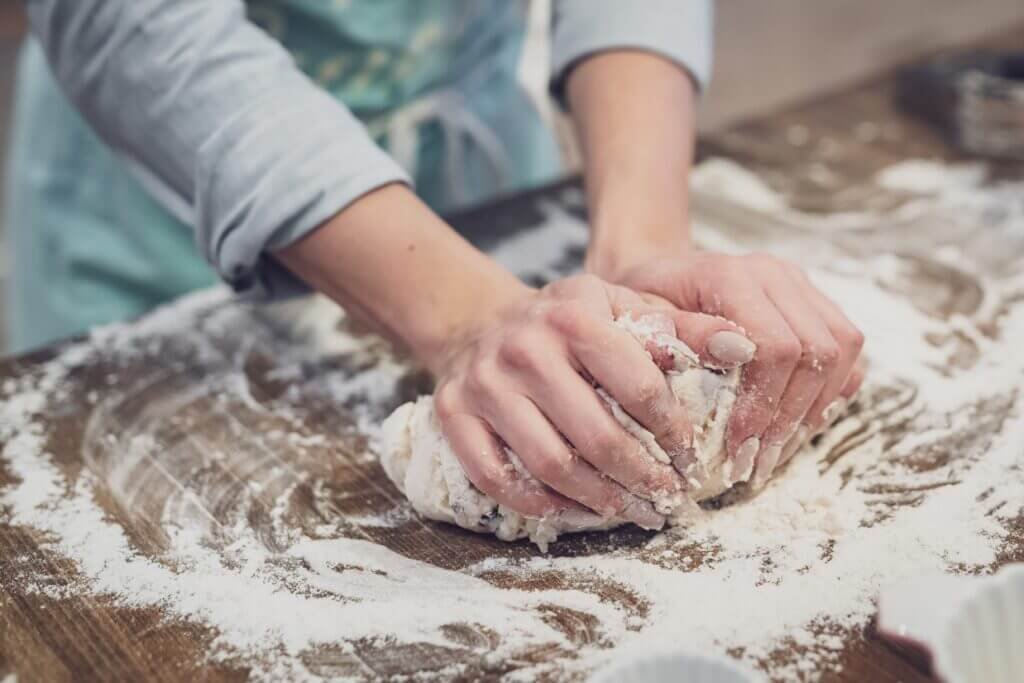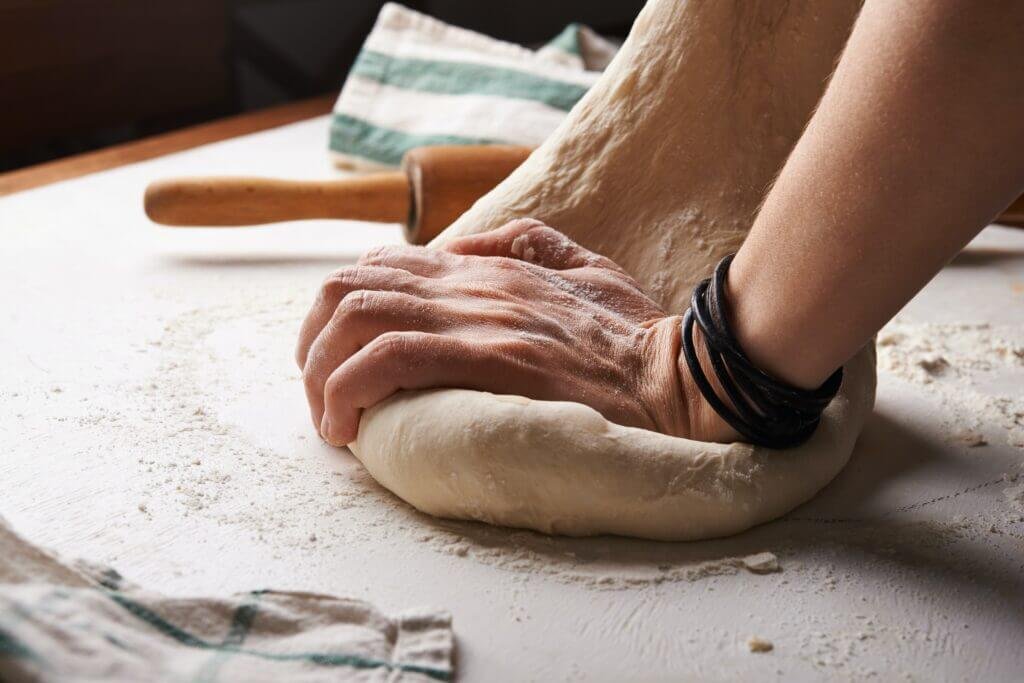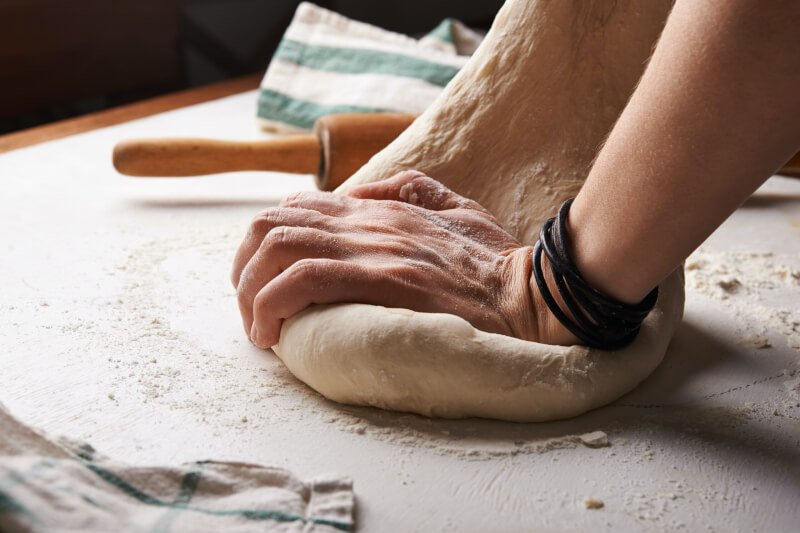Making homemade brownies can be a delightful adventure that results in a batch of warm, gooey goodness. But what are the secrets to achieving the perfect texture, flavor, and overall satisfaction? In this article, we will explore the best practices for concocting these beloved treats in the comfort of your own kitchen. From choosing the right ingredients to mastering the baking time, you will discover the key steps to creating homemade brownies that will have your taste buds begging for more. So grab your mixing bowl, preheat your oven, and get ready to embark on a chocolatey journey like no other.

Choosing the Right Ingredients
Quality Chocolate
When it comes to homemade brownies, using high-quality chocolate is essential for achieving that rich and luxurious taste. Opt for a good quality chocolate with a high percentage of cocoa solids. Dark or semi-sweet chocolate works best as it imparts a deep and intense flavor to the brownies. Avoid using chocolate chips as they may contain stabilizers that can affect the texture of the brownies.
Unsalted Butter
Butter adds a wonderful richness and flavor to brownies. It’s important to use unsalted butter to have better control over the saltiness of the final product. Unsalted butter also helps in keeping the texture of the brownies moist and tender.
Granulated Sugar
Granulated sugar is the main sweetener in brownies. It not only adds sweetness but also provides structure and helps in creating that crackly top. Make sure to use a good quality granulated sugar, and if desired, you can also experiment with different types of sugars like brown sugar or coconut sugar for a unique twist in flavor.
Eggs
Eggs are another crucial ingredient in brownies as they contribute to the structure and richness of the dessert. Beating the eggs well with the sugar will help in creating a fudgy and moist texture. Ensure that the eggs are at room temperature before using them, as this will help in achieving a smoother batter and better overall consistency.
All-Purpose Flour
All-purpose flour is the most commonly used flour in brownie recipes. It provides structure and stability to the batter. However, be careful not to overmix the flour as it can result in a dense and tough texture. Remember to sift the flour before incorporating it into the batter to prevent any lumps.
Cocoa Powder
Cocoa powder is what gives brownies their iconic chocolate flavor. It is important to use unsweetened cocoa powder to control the sweetness of the brownies. Dutch-processed cocoa powder is a popular choice as it has a smoother and less acidic taste compared to natural cocoa powder. Whichever type of cocoa powder you choose, make sure to sift it to remove any lumps and ensure a smooth batter.
Prepping the Ingredients
Room Temperature Ingredients
Before you begin mixing your brownie batter, it is crucial to ensure that all your ingredients, especially the eggs and butter, are at room temperature. Room temperature ingredients blend together more easily, resulting in a smoother and more uniform batter. So, be sure to take your butter and eggs out of the fridge well in advance and allow them to come to room temperature naturally.
Chopping the Chocolate
If you are using chocolate bars instead of chocolate chips, it is important to chop them into small, even pieces before melting. This will help in achieving an even melt and ensure that the chocolate is distributed evenly throughout the brownies. Use a sharp knife and a solid cutting board to chop the chocolate, aiming for small chunks or fine pieces, depending on your preference.
Sifting the Dry Ingredients
Sifting the dry ingredients, such as the flour and cocoa powder, before incorporating them into the batter is an important step to ensure a smooth and clump-free mixture. Sifting helps to remove any lumps or impurities from the dry ingredients, resulting in a more uniform and lighter texture in the final brownies. Use a fine-mesh sieve or a flour sifter to sift the dry ingredients into a bowl before adding them to the wet ingredients.

Mixing the Batter
Melting the Butter and Chocolate
To achieve a smooth and luscious brownie batter, it is important to melt the butter and chocolate together. This can be done using a double boiler or by carefully microwaving the two ingredients in short bursts, stirring in between, until fully melted and combined. Melting the butter and chocolate together helps in achieving a glossy and indulgent texture in the brownies.
Beating the Eggs and Sugar
The eggs and sugar need to be beaten together until they become light and fluffy. This step creates air pockets in the batter, resulting in a lighter and less dense texture. Use an electric mixer or a whisk to beat the eggs and sugar together until they become pale in color and form ribbons when the whisk is lifted.
Incorporating Dry Ingredients
Once the eggs and sugar are beaten to the desired consistency, it’s time to add the dry ingredients. Gradually add the sifted flour and cocoa powder mixture to the wet ingredients, gently folding them in until just combined. Be careful not to overmix at this stage, as it can lead to a tougher texture in the brownies. Stop mixing as soon as you no longer see any streaks of flour in the batter.
Adding Optional Mix-ins
This step is where you can get creative and add your favorite mix-ins to personalize your brownies. Popular mix-ins include chocolate chips, nuts, dried fruits, or even a swirl of peanut butter. Gently fold in the mix-ins to ensure they are evenly distributed throughout the batter. Remember that adding additional ingredients may affect the baking time, so keep an eye on the brownies as they bake.
Baking Techniques
Choosing the Right Pan
The choice of the baking pan can greatly influence the texture and baking time of your brownies. For fudgy and dense brownies, use a metal or glass baking pan. If you prefer more cake-like brownies, opt for a lighter-colored or nonstick baking pan. The size of the pan will also affect the thickness of the brownies, so choose accordingly based on your preference.
Preheating the Oven
Preheating the oven is an important step to ensure that your brownies bake evenly. It allows the batter to start cooking right away rather than having to wait for the oven to reach the desired temperature. Preheat your oven to the specified temperature stated in the recipe, usually around 350°F (175°C), before placing the brownie pan inside.
Lining the Pan with Parchment Paper
To prevent your brownies from sticking to the pan and ensure easy removal, it is recommended to line the baking pan with parchment paper. Simply cut a piece of parchment paper to fit the bottom of the pan and extend slightly up the sides, allowing for easy lifting once the brownies are done. This step also makes clean-up a breeze.
Understanding the Oven Temperature
Every oven is slightly different, and knowing how your oven heats and cooks is key to achieving perfect brownies. It is important to invest in an oven thermometer to ensure that your oven temperature is accurate. This will prevent undercooked or burnt brownies. If your oven tends to run hot, you may need to reduce the temperature slightly or adjust the baking time accordingly.
Checking Brownies for Doneness
To determine if your brownies are fully baked, insert a toothpick or a wooden skewer into the center of the pan. If it comes out with a few moist crumbs clinging to it, the brownies are done. The toothpick should not come out completely clean, as this would mean the brownies are overcooked and may have a dry texture. Remember that the brownies will continue to cook slightly as they cool, so it’s better to slightly underbake them for a fudgier texture.

Cooling and Cutting
Cooling the Brownies
Once the brownies are done baking, it is important to let them cool completely in the pan. This allows the brownies to set and firm up, making it easier to slice them neatly. Transfer the pan to a wire rack and let the brownies cool for at least 1-2 hours. Avoid the temptation to cut into them right away, as this can result in crumbly and messy slices.
Removing Brownies from the Pan
To remove the cooled brownies from the pan, simply lift the edges of the parchment paper and transfer them onto a cutting board. Gently peel off the parchment paper from the sides and bottom of the brownies. If you didn’t use parchment paper, use a sharp knife to carefully loosen the edges of the brownies from the pan before lifting them out.
Cutting Brownies into Neat Pieces
To achieve neat and even brownie squares, use a sharp knife to cut them. Wipe the knife clean between each cut to ensure clean edges. If you prefer smaller brownies, cut them into bite-sized squares. For larger brownies, cut them into generous rectangles. When storing the brownies, make sure to cover them tightly to prevent them from drying out.
Storage and Serving
Storing Brownies
To keep your brownies fresh and delicious, store them in an airtight container at room temperature. Make sure the container is tightly sealed to prevent any moisture from seeping in. Properly stored, brownies can last for up to 3-4 days. If you want to extend their shelf life, you can also store them in the refrigerator for up to a week or freeze them for up to three months.
Enhancing the Flavor and Presentation
To elevate the flavor and presentation of your brownies, you can dust them with powdered sugar, drizzle them with melted chocolate, or even sprinkle some sea salt on top for a touch of sophistication. Adding a scoop of vanilla ice cream or a dollop of whipped cream can also enhance their decadence. Get creative and play around with different toppings and garnishes to make your brownies more visually appealing.
Serving Suggestions
Brownies are delicious on their own, but they can also be served alongside other desserts for a delectable dessert platter. Pair them with a scoop of ice cream, a dollop of homemade whipped cream, or even some fresh berries for a refreshing contrast. You can also serve them warm with a glass of cold milk for a classic and comforting treat. The possibilities are endless, so feel free to experiment and find your favorite serving combination.
Ingredient Substitutions
Healthier Options
If you’re looking for healthier alternatives in your brownie recipe, there are a few ingredient substitutions you can make. Instead of using all-purpose flour, you can try swapping it with whole wheat flour, almond flour, or oat flour for added nutrients and fiber. Instead of regular granulated sugar, you can use natural sweeteners like honey, maple syrup, or coconut sugar. Lastly, you can reduce the amount of butter by substituting it with applesauce, yogurt, or mashed bananas to lower the fat content.
Allergen-Friendly Alternatives
For those with allergies or dietary restrictions, there are several ingredient alternatives available. To make brownies gluten-free, use a gluten-free all-purpose flour blend or almond flour. For dairy-free brownies, substitute the butter with a plant-based butter or coconut oil, and use dairy-free chocolate. To make egg-free brownies, replace each egg with a flaxseed or chia egg, which is made by mixing ground flaxseeds or chia seeds with water until it forms a gel-like consistency. These substitutions allow everyone to enjoy delicious homemade brownies regardless of their dietary needs.
Troubleshooting Common Issues
Dry or Crumbly Texture
If your brownies turn out dry or crumbly, it could be due to overbaking or using too little moisture in the recipe. To prevent this, make sure you bake the brownies for the recommended time and regularly check for doneness using a toothpick. Additionally, ensure that you are using enough moist ingredients, such as butter or oil, and do not overmix the batter, as this can result in a drier texture.
Cakey Brownies
Cakey brownies are often the result of overmixing the batter or using too much leavening agent, such as baking powder or baking soda. To achieve a fudgy texture, be careful not to overmix the batter once the dry ingredients have been added. Additionally, use the recommended amount of leavening agent as stated in the recipe and avoid adding extra unless specifically called for.
Gooey or Undercooked Centers
If the center of your brownies is still gooey or undercooked, it might mean that they were not baked long enough. To ensure even baking, make sure your oven is properly preheated and set to the correct temperature. Additionally, check the brownies for doneness using a toothpick to ensure that they are fully cooked in the center before taking them out of the oven.
Burnt Edges
Burnt edges can occur if the oven temperature is too high or if the brownies are baked for too long. It’s important to follow the baking instructions and keep a close eye on the brownies during the last few minutes of baking. To prevent burnt edges, you can also try placing a foil collar around the edges of the pan, or you can reduce the baking temperature slightly and extend the baking time if needed.
Sticking to the Pan
To prevent your brownies from sticking to the pan, it’s crucial to line it with parchment paper or to grease it well before pouring in the batter. The parchment paper creates a non-stick surface, making it easier to remove the brownies once they are cooled. If you didn’t use parchment paper and your brownies are still sticking, you can try using a thin spatula or a butter knife to carefully loosen the edges before removing them from the pan.
Customizing Your Brownies
Adding Nuts
Nuts are a popular addition to brownies as they add a delightful crunch and texture. Walnuts and pecans are classic choices, but you can experiment with different types of nuts like almonds, cashews, or even macadamia nuts. Toast the nuts beforehand to enhance their flavor and sprinkle them on top of the brownie batter before baking.
Swirling in Cream Cheese
For a tangy and creamy twist, you can create a cream cheese swirl in your brownies. Simply soften some cream cheese and sugar, and gently swirl it into the brownie batter using a toothpick or a skewer. This adds a luscious and marble-like appearance to the brownies and provides a delightful contrast to the rich chocolate flavor.
Creating Marbled Effect
To create a visually stunning marbled effect, layer the brownie batter and a cheesecake-style batter in the baking pan. Place dollops of each batter side by side and use a skewer or a knife to gently swirl them together. The result is a beautiful and unique pattern that will impress both the eyes and the taste buds.
Introducing Unique Flavors
There are many ways to introduce unique flavors into your brownies. You can add a hint of espresso powder to intensify the chocolate flavor, or you can incorporate spices like cinnamon, nutmeg, or even chili powder for an adventurous kick. Experiment with extracts like mint, almond, or orange to create exciting flavor combinations. The possibilities are endless, so don’t be afraid to get creative and infuse your brownies with your favorite flavors.
Tips and Tricks
Using a Kitchen Scale for Accuracy
For the best results, it is highly recommended to use a kitchen scale to measure ingredients. Baking is a science, and using precise measurements ensures consistent results. Measuring ingredients by weight rather than volume provides greater accuracy, especially when it comes to ingredients like flour and cocoa powder, which can vary in density.
Properly Melting Chocolate
When melting chocolate for your brownie batter, it’s important to do it slowly and gently to avoid scorching or seizing the chocolate. Use a double boiler or a heatproof bowl set over a pan of simmering water to melt the chocolate, stirring frequently until smooth and glossy. If microwaving, use short bursts of low heat, stirring in between, until fully melted. Be careful not to overheat the chocolate, as it can become grainy and unusable.
Adding Espresso Powder for Intense Flavor
To enhance the chocolate flavor in your brownies, consider adding a teaspoon or two of espresso powder to the batter. The espresso powder doesn’t add a coffee taste but it amplifies the richness and depth of the chocolate, resulting in a more intense and decadent brownie experience.
Experimenting with Frosting or Ganache
If you want to take your brownies to the next level, consider adding a luscious frosting or a dreamy ganache on top. A smooth chocolate ganache made with cream and melted chocolate adds a luxurious touch. You can also experiment with different frosting flavors like cream cheese, peanut butter, or mint for a delightful contrast. Spread the frosting or ganache evenly over the cooled brownies and let it set before cutting and serving.
By following these best practices, you can create homemade brownies that are moist, fudgy, and packed with rich chocolate flavor. Whether you prefer them plain, loaded with mix-ins, or adorned with a delicious topping, homemade brownies are sure to bring joy and delight to any occasion. So, roll up your sleeves, gather your ingredients, and get ready to bake the most irresistible batch of brownies you’ve ever tasted.


